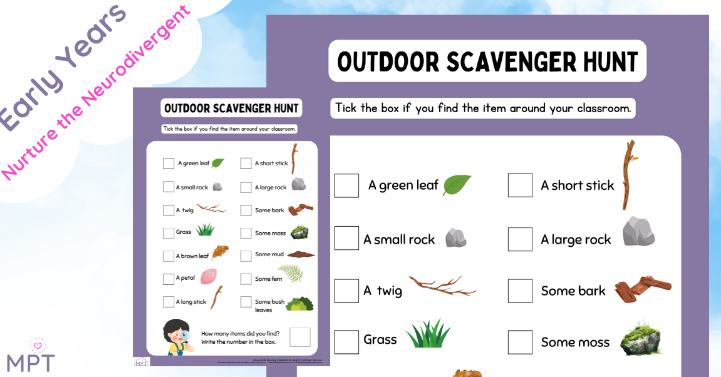Transform your Year 5 maths lessons with this Outdoor Lesson Plan on Rounding Up to Check Answers, designed to make...
Rounding Up Year 5
Nov 18, 2024
Transform your maths lessons with this Outdoor Lesson Idea Pack: Rounding Up for Year 5, designed to bring energy,...
5 Outdoor Sensory Circuits Ideas
Nov 14, 2024
5 Outdoor Sensory Circuits Ideas Pack Unleash the power of outdoor sensory play with our "5 Outdoor Sensory Circuits...
Ancient Greece Outdoor Lesson Plan Ideas KS2
Nov 14, 2024
Ancient Greece Outdoor Lesson Plan Take your students on an unforgettable journey back in time with the Ancient Greece...
24 Nature Crafts for Advent
Nov 14, 2024
24 Nature Crafts for Advent: A Journey of Creativity and Connection Celebrate the season with "24 Nature Crafts for...
KS3 Outdoor Art Ideas Pack
Nov 13, 2024
KS3 Outdoor Art Ideas Pack Unleash creativity in the great outdoors with the KS3 Outdoor Art Ideas Pack! Designed to...
Fractions KS1 Ideas Pack
Nov 13, 2024
Fractions KS1 Ideas Pack Make learning fractions fun, engaging, and hands-on with our Fractions KS1 Ideas Pack!...
Craft Ideas for Babies in Autumn
Nov 13, 2024
Craft Ideas for Babies in Autumn – Ideas Pack Introducing the "Craft Ideas for Babies in Autumn" Ideas Pack—a...
Adjectives in Autumn KS1
Nov 13, 2024
Adjectives in Autumn KS1 Outdoor Worksheet Bring the beauty of autumn to life with our "Adjectives in Autumn" KS1...
My Senses in Autumn (KS1)
Nov 13, 2024
My Senses Autumn KS1 Outdoor Worksheet Bring the magic of autumn to life with our "My Senses Autumn" KS1 Outdoor...
Parachute Games Knowledge and Understanding of the World
Nov 13, 2024
Early Years Parachute Games - Knowledge & Understanding of the World Idea Pack Unlock the world's wonders with our...
25 Parachute Games (PSED)
Nov 13, 2024
25 Parachute Games (PSED) Idea Pack Unlock the power of play with our "25 Parachute Games for Personal, Social, and...
Lanyard Challenges Sand Area (Underwater Theme)
Nov 13, 2024
Product Description: Lanyard Challenges Sand Area (Underwater Theme) Dive into a world of imagination with the Lanyard...
Mud Kitchen Posters – Christmas Theme
Nov 12, 2024
Christmas-themed Mud Kitchen Posters Bring festive cheer to your little one's outdoor play area with our delightful...
Mud Kitchen Recipe (Autumn Theme)
Nov 12, 2024
Product Description: Mud Kitchen Recipe Kit – Autumn Theme Ignite your child's imagination and connection with nature...
Mud Kitchen Recipes (Bonfire Night)
Nov 12, 2024
Ignite creativity and sensory exploration with our Mud Kitchen Recipes: Bonfire Night Theme! This unique collection of...
KS2 Anti-Bullying Week Ideas Pack
Nov 12, 2024
Empower KS2 students to embrace kindness, empathy, and inclusion with our KS2 Anti-Bullying Week Ideas Pack, inspired...
Anti-Bullying Week KS1
Nov 12, 2024
Anti-Bullying Week KS1 Our Anti-Bullying Week Ideas Pack for KS1 is designed to support young learners in...
New In

Outdoor Learning Scavenger Hunt (Toddlers)

Outdoor Learning Scavenger Hunt

Bug Outdoor Learning Scavenger Sheet

Outdoor Learning Activities for Nursery – Resource Pack

Outdoor Learning Safety Poster

Outdoor Learning Risk Assessments: (Handout)

Outdoor Learning Safety Advice (CPD Handout)

Outdoor Learning CPD Guidance (Handout )

Outdoor Learning Ideas for Schools: Engaging Ways to Teach Outside




















